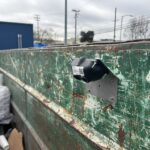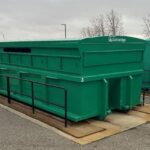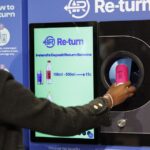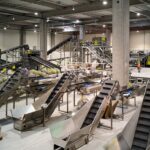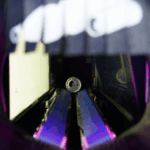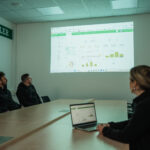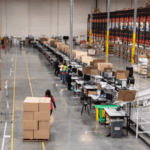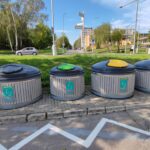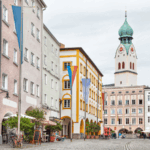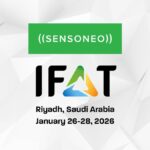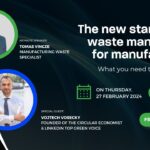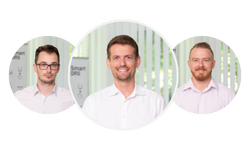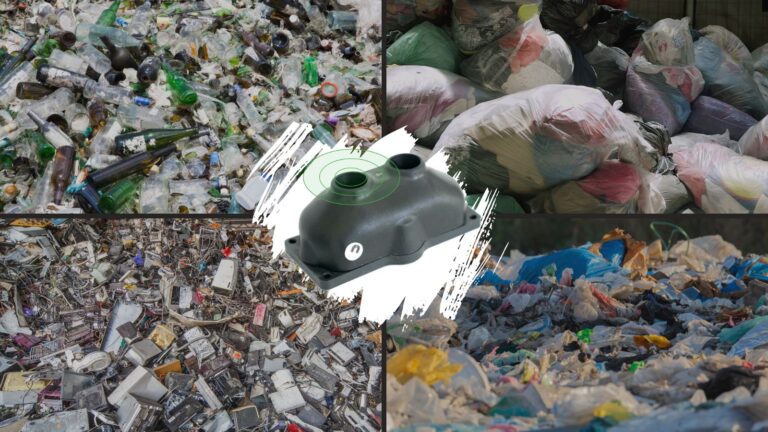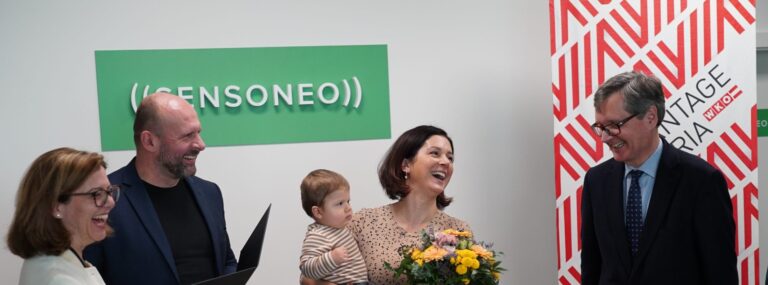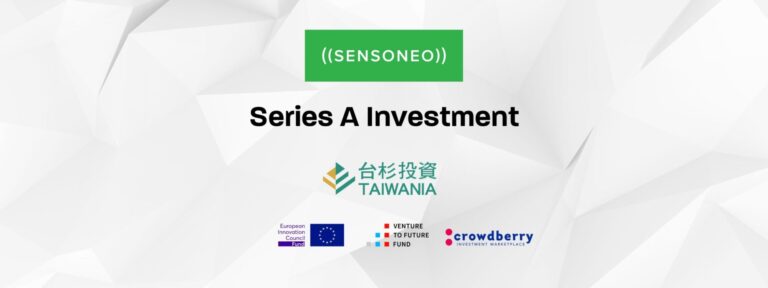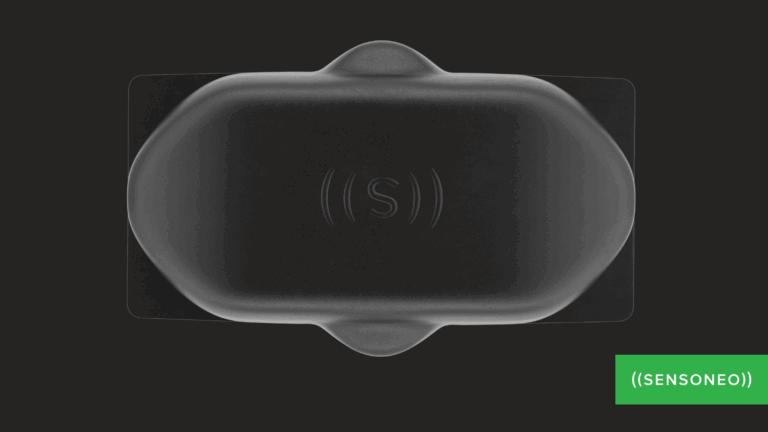Interview on Deposit Return Schemes with Sensoneo CEO Martin Basila
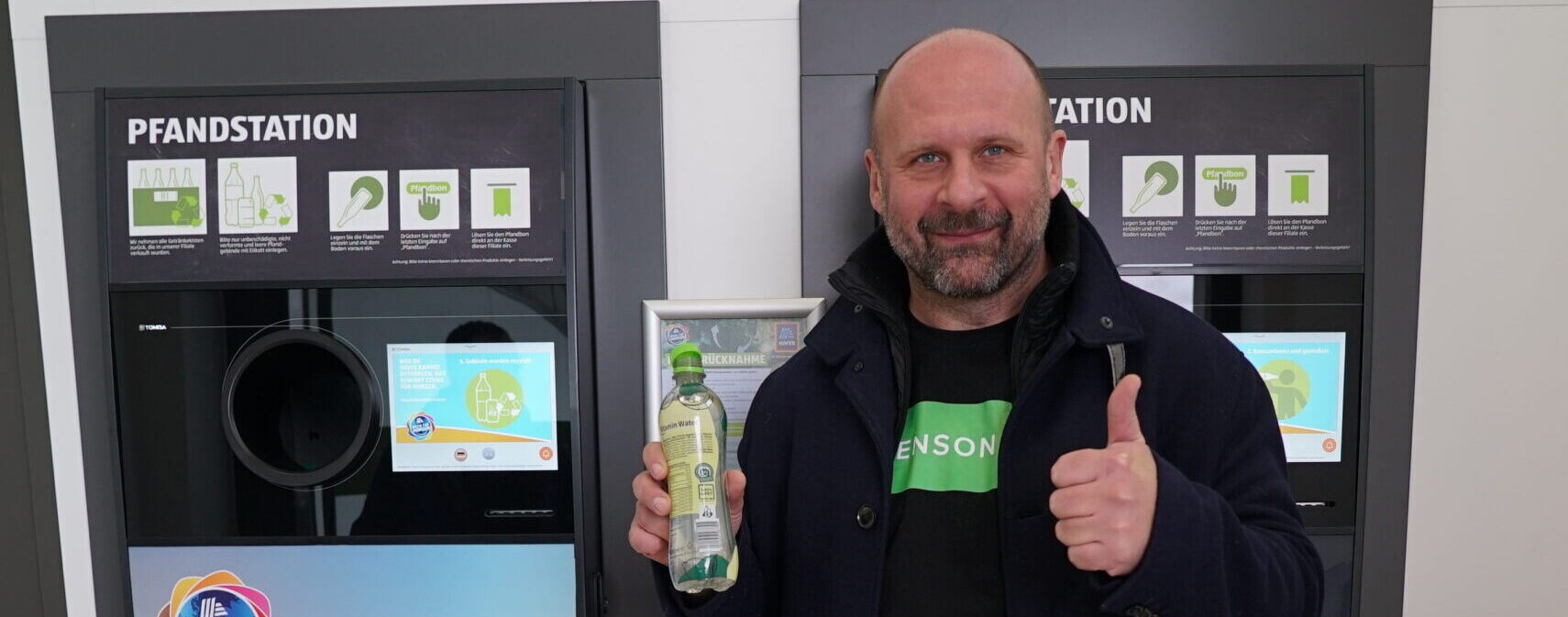
The recent news about Sensoneo’s involvement in the Portuguese Deposit Refund System as the IT system provider, along with its success during the first year of DRS in Ireland, has caught the attention of various media outlets worldwide. Preparations and discussions regarding DRS are also ongoing in another country on the Iberian Peninsula.
The most prominent waste-focused portal in Spain, Residuos Profesional, conducted an interview with Sensoneo CEO Martin Basila, featuring insightful questions about the scheme, Sensoneo’s role, and the current status in Spain.
On our blog, we offer an exclusive English translation of the interview.
The original version was published at the following link: https://www.residuosprofesional.com/sddr-no-es-lavado-verde/
Your company can claim to operate IT system in 9 nationwide DRS projects, which is pretty unique. How did you become such a leader for DRS software?
We are very proud of the fact that we are implementing and operating the end-to-end DRS IT system in nine countries already. And how did it happen? It happened organically. For a scale-up like us, it’s a dream. It’s a dream that one successful implementation, delivered on time and with high quality, led to another implementation in Malta. Afterwards, more and more countries followed, mostly because they saw positive references from the previous ones.
And DRS is extremely, extremely hectic — I would say projects are always under pressure. There is a deadline defined by law, and you simply have to meet it. On the CAPEX list of any DRS operator, there are so many priorities — recycling, sorting centers, logistics, operations, staff — so many things they have to manage.
If there’s one area where they can be confident that the outcome will be positive, it’s the IT system. The IT system is the backbone of DRS. And this positive track record of always delivering on time is helping us win more and more clients.
This is exactly how business should work — a positive reference drives more sales and more work, work that has a green impact for our company. We are proud of it and very thankful.

What is the competitive advantage helping you to successfully win new projects?
The competitive advantage is, as mentioned, the positive reference that proves we can truly deliver on time, with quality, and with the level of complexity required for DRS projects. And that’s it.
It’s genuinely organic, because new DRS operators, or soon-to-be operators, are meeting with countries that are already operating DRS, and they ask many, many questions. One of the key questions is: who implemented the IT for you, and what does it mean to have good IT?
That’s when our name comes up. And it’s not like they give us the business directly — it’s always a tender. It’s always a transparent tender. And we are able to compete with our qualifications, our pricing, and our reliability.
What are the biggest lessons and takeaways learned during the implementations?
The biggest takeaway is that a greenfield project is always easier than implementing something into a living organism. Take Hungary, for example. They had been using their systems already, so it’s always complex to introduce something new into an existing setup.
It’s very, very important that the customer, the operator, has a dedicated team with enough time and capacity to be our partner when it comes to requirements gathering, analytic sessions, and proper UAT testing of the solution. That’s key.
We’ve always had good customers, I can’t recall anyone who wasn’t positive and aligned with us. We know we’re on the same ship, on the same board, and we have to deliver together. And the deadline set by law is always approaching. So we’ve been well aligned with all of our customers.
Also, during the first months of operation, when anything can happen, we need to be ready, super flexible, and work together to find solutions, troubleshoot, and implement fixes ASAP.
The lesson learned is that you must have a proper counterpart on the other side. And fortunately, I can say we always have, even during these ongoing implementations. That’s the key.

What are the major challenges in implementing a nationwide DRS, and how does Sensoneo tackle them?
Well, there are many challenges, and Sensoneo always tackles them together with the customer. Nothing can be done without the customer. Typically, the timeline is fixed, the go-live date is fixed, so the only thing you can adjust is capacity. You can add more capacity if you’re under pressure, but even then, there are limits, a certain cap.
That’s why it’s important to have a common agreement with the customer. For example, discussing the minimum viable product. Sometimes you’re not descoping, but the customer agrees: “OK, this and that functionality is nice to have, but we can wait until after go-live,” because urgent issues arise and take priority.
Sensoneo always addresses these challenges together with the customer, and we’re very proud to have 160 professionals who are highly skilled in DRS. Whether the issue is in frontend, backend, analysis, testing, or DevOps — we always have duplicity in each area of expertise.
That allows us to quickly scale up with high-quality, well-trained experts. It’s a very comfortable position to be in, and we’re grateful for it.

How do local regulations and cultural habits influence the implementation of a DRS?
There are no two identical DRS schemes in the world. Every DRS must follow European regulations, but those are broad, and the specifics are really defined by local habits, local regulations, local laws, local conditions, and how the market operates.
Who sits on the board also varies — typically it’s producers, but sometimes it’s retailers, sometimes a 50/50 mix, and in some cases, the government is also involved. Each of them brings their own requirements and perspectives, and you have to adapt accordingly.
But we’ve reached the point where our IT solution is truly a product. The product defines the key processes, features, classifiers, and functions. We’re not just asking, “Hey, what do you want?” We’re also guiding, educating, and evangelizing the client: “Hey, for this process, this is the best practice in the market.”
But they’re free to adapt. If they accept the solution as is, it will be faster and delivered with high quality. Still, we’re ready for customization. Our product is highly customizable, and we will tailor it for them if needed. Of course, that means more time and significantly more extensive testing, since it involves adding new elements on top of the product.

What is the typical timeline from project start to full-scale DRS launch?
We love having a timeline of one year or 11 months. It’s very comfortable for both sides, to be honest. In our first project, it was more comfortable for us. In recent projects, it’s more comfortable for the customers, because on our side, we really have a product now, so we can implement very quickly.
When there’s not enough time, most of the pressure shifts to the customer, who has to define their requirements much faster. So for both sides, I would strongly recommend having 11 months.
That said, we have implemented projects in just three or four months, and it was extremely hectic on both sides. To be very open, it then takes another year to catch up and to deploy all the remaining functionalities, because you’re integrating them into a live system.
Everything is possible in IT, especially in a virtual world nowadays. However, we truly recommend a 10–11 month timeline. It’s a very comfortable pace.
Sensoneo recently announced that it will provide the IT solution for DRS in Portugal, how is this specific for Sensoneo compared to other projects?
First of all, we are very thankful that the administrator SDR Portugal chose us. It means a lot to us. Portugal is the first country in the region and a role model for Southern Europe. Other countries like Spain, France, Italy are closely watching what is happening and how Portugal is doing it.
I would say Portugal shares certain similarities with tourism-heavy countries like Malta. So, specific processes must be implemented to support the HoReCa sector. We’re really leveraging the knowledge and technology we developed for tourism-oriented countries.
Otherwise, it’s quite similar to other DRS operators – nothing overly unique, which is a good thing. It’s always a challenge when someone on the customer side tries to reinvent the wheel, but that’s rare. Typically, the DRS associations, which were recently established, and their members help newcomers by sharing knowledge and best practices.
So, it’s very rare to see someone trying to create something completely new. In Portugal, as mentioned, it’s more focused on HoReCa, but we’ve already seen that, and we’re well prepared. I can say the implementation is going very well — thanks in large part to our customer.
Could you describe the impact of DRS on recycling rates in the countries where you’ve implemented it?
DRS is truly a solution that doesn’t fall into the category of greenwashing. It’s a real, measurable solution with a clear impact. The data is highly transparent. You usually know exactly how much volume has been placed on the market, and we can track, at the item level, how much has been collected and recycled.
The material collected is also very clean — it’s not mixed with other PET or plastic materials, or with other types of aluminum. As a result, losses on the sorting line are dramatically lower compared to lines that handle mixed PET, aluminum, and other types of packaging.
The quality of the material is significantly better. And return rates reflect that success. Slovakia is a perfect example. In just one and a half to two years, they reached over a 90–92% return rate, which is excellent.
We’re seeing the same trend in other countries. For instance, Slovakia started at 58%, which wasn’t bad. Some countries may start even lower, but the growth in return rates is consistently increasing very fast.
Are you looking at the DRS situation in Spain? Have you been already involved in some conversations?
Most of the Spanish stakeholders who are likely to be part of the DRS operator in Spain are already active in Portugal — they sell to both countries or operate retail chains across both.
They’re gathering a lot of know-how directly from firsthand experience in Portugal, and through that, we are also in contact with them.
Do you think the structure of the retail sector in Spain will adapt well to the DRS? will it have an impact on small retailers?
The impact will be positive. We strongly support the back-to-retail approach — meaning consumers return containers to the retailer and then spend the deposit on the retailer’s premises. It motivates customers to visit the store and creates an additional point of engagement by offering a convenient return option.
Other countries also include many small retailers — like Ireland or Romania. In Romania, for example, 45,000 retailers are included in the system, and about half of them are very small. For these, manual collection is used, which requires minimal investment. They don’t purchase RVMs, as those represent a significant cost.
Small retailers are often not obligated to join the scheme, typically due to square meter requirements. If the retail space is below a certain size, participation is not mandatory. However, we’ve seen a trend where many small retailers join voluntarily, simply to be able to offer DRS services to their customers.
So, we believe the Spanish market and the structure of retail there are absolutely suitable — and the system will be a success.

Spain is a country that receives millions of tourists every year who consume millions of plastic bottles and cans. But it is not clear that these people will participate in the DRS, at least in a generalised way. Do you think this could be a handicap for the success of the system?
The hotel, restaurant, and catering (HoReCa) sector in Spain is significant — just like in Portugal, Malta, and partially in Ireland. From my point of view, they definitely need to be part of the system, as they generate a large volume of material.
This doesn’t mean that tourists have to return containers there physically. Typically, the containers are returned by the hotels, restaurants, and event venues themselves, much like they already do with glass. So it’s not a new concept for them.
It’s common for public return points to be available nearby, where they can quickly park a van with high volumes and return the containers. Alternatively, distributors delivering new goods can take back the empty containers and bring them to collection points that are prepared to handle larger volumes.
So yes, we strongly recommend including the HoReCa sector in the system, and there are very practical, well-functioning solutions already available for that.
What would you say to critics who claim DRS is too costly or complicated to implement?
In many countries, there are always critics. Typically, they come from groups of businesses that will lose a certain revenue stream because of the DRS. I don’t need to name them, it’s a stereotype. In every country, a similar group of businesses criticizes the system, often using the same arguments.
But in the end, the system is, and will be also in Spain – a huge success. DRS is truly a solution that can achieve a return rate of over 90%, as required by EU regulation. But beyond that, I believe that we, as individuals, also want the highest possible return rate because of its extremely positive impact on nature.
So, I would say it will always be a success, even if there are critics. However, as a technology company, we listen to the criticism, and the cost of the system is not the only issue raised. There are concerns such as not being able to crush containers, or the space taken up in retail locations.
We’re very happy to be bringing new innovations that address these challenges. And we’re excited that the first countries have started testing our concept called Smart DRS with us.
Let’s see how it will be received in Spain, but we truly hope this will be the way forward: a DRS that is both affordable and user-friendly for consumers and retailers alike.

How do you see the future of circular economy technologies in Europe?
In Europe, I’m very happy that the space for greenwashing activities is getting smaller and smaller, and that there are institutions actively challenging anyone claiming to be super green. I personally don’t like greenwashing, as it misuses good intentions just to make noise or do business.
So, I believe we are already on the path toward rationalizing such activities in Europe.
From a technology perspective, we see that Europe is a role model for many countries. DRS itself is being adopted even in places without such regulations — like in the first Asian countries where we’re now very happy to be implementing. We can’t name them at the moment, but even Asia is following Europe, and so is the Middle East.
They don’t have to follow European regulations, but they see the value and want to make a positive impact in their own countries. We see this happening in Asia, the Middle East, Africa and also in Latin America — these countries are adopting the best practices from Europe.
So I believe that Europe will continue to be the leader in the circular economy, and we’re happy to contribute through our technological solutions.
Hand in hand, strong green initiatives combined with affordable, effective technology will be the winning formula — and one of the export articles of the European Union. That’s how I see it.
Latest blog articles
 Smart Waste
Smart WasteTop 5 waste streams for using smart sensors
Read more Awards
AwardsSensoneo received the Energy Globe Award
Read more Sensoneo
SensoneoSensoneo announced a series A investment of more than 6 million euros
Read more Sensors
SensorsSmart waste innovation protects businesses from cooking oil theft
Read more
Smart Waste Newsletter
Get monthly updates from our company and the world of waste!

